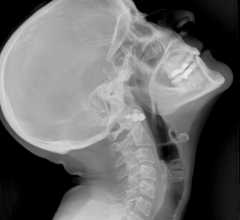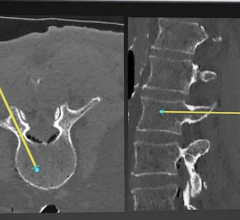
April 7, 2009 - The World Health Imaging Alliance (WHIA) said at HIMSS 2009 that it has cemented key partnerships that will enable it to significantly ramp up its efforts to bring digital imaging technology to sites in need around the world. Basic diagnostic X-ray services are a key component of primary health care delivery. However, two-thirds of the world’s population is without access to it, according to World Health Organization (WHO) estimates. The WHO further estimates that there is a need for one diagnostic imaging machine for every 50,000 people. WHIA’s vision is to facilitate the deployment of 20,000 of these systems worldwide, thus providing one billion people with access to diagnostic imaging. Access to imaging may be life saving. As Mladen Poluta, Director of the Healthcare Technology Management Program at the University of Cape Town, explains, “HIV-positive patients are at an increased risk of contracting (pulmonary) tuberculosis, which can be diagnosed quickly with a chest X-ray. Even those on prophylactic TB treatment require chest X-rays. Given the large disease burden associated with TB and HIV, in particular, cost-effective and sustainable imaging solutions at the primary level of healthcare - with telediagnosis as an added value extension - will result in significant gains in the quality of care delivered, thanks to earlier diagnosis and commencement of treatment.” WHIA intends to fulfill its vision by providing a complete, low-cost, sustainable digital imaging solution. Although many of today’s providers can bring low-cost solutions to developing countries, most have been ineffective at creating sustainability, according to the WHIA. As a result, less than half of the approximately 1,500 WHO-approved, installed X-ray systems are in operation today. In addition, many solutions miss capabilities such as clinical site needs assessment, image storage, teleradiology and remote monitoring; all of which WHIA aims to provide for enhanced sustainability of an imaging clinic. WHIA is also working to significantly enhance the benefits of digital imaging by adding next generation functionality and services to its solution. It is concentrating on developing future capabilities that will make it possible for clinics and hospitals to access telemedicine for improved health service delivery; provide a platform that will be used to develop improved tools for computer aided detection and diagnosis; and provide clinics and hospitals with the ability to utilize electronic medical records and offer every patient direct access to their own personal health records. In order to provide a complete solution, WHIA has developed partner relationships with key vendors. Sedecal, a global OEM manufacturer of X-ray systems, has partnered with WHIA to provide the WHO-approved X-ray machine. "Sedecal is honored and excited to be able to join this project,” says Manuel Martinez-Garcia, President and CEO. “WHIA will make a difference in diagnosis and, thus, improve healthcare in developing and remote areas of the world. Sedecal's commitment is to assist WHIA on the technical side, putting its engineering resources at the disposal of the project and developing the x-ray systems for these special applications. Sedecal has also invested in WHIA by donating equipment and manufacturing equipment at a discounted cost." Digital medical imaging is provided through a relationship with Carestream Health, a global company providing medical and dental imaging systems and information technology solutions. Several of Carestream Health’s Point of Care CR systems have been donated for use in the pilot installations. The software systems that manage the digital images have been provided through a partnership with Merge Healthcare. Merge has pledged staff time, software licensing and product development assistance for the current and next generation of WHIA solutions. For more information: www.whia2009.org


 July 18, 2024
July 18, 2024 







